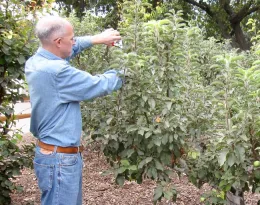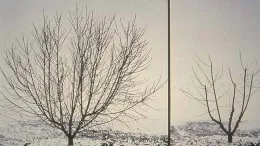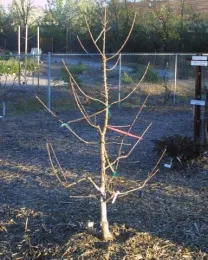
During the first two to four years after planting a new fruit tree, fruit production is either light or absent. However, this is the time when major root growth takes place and the basic framework of the tree is being developed. Actually, the first year that the tree is in the ground is the most important for root development. Stress caused by diseases, nematodes, weed competition or insufficient water can slow or stop root development, and hence top development. If your tree's growth is stunted from the beginning, there is little chance that it will grow satisfactorily in later years. After the first years, young trees become more tolerant to many of these stresses.

The second and third growing seasons are critical ones for developing your tree's framework for fruit production. Deciduous fruit and nut trees must be properly trained for structural strength while developing maximum fruiting area. The system most used is the open center or vase system. Citrus and avocado trees, on the other hand, do not require extensive pruning. Pests such as twig boring insects that cause distortion of early limb growth are most serious during these early years, because their damage affects the ultimate shape of the tree.
Young trees are often most susceptible to certain diseases such as bacterial canker or verticillium wilt. If your trees reach eight or nine years of age without being badly injured by these diseases, chances are good that they will survive future attacks.

Of course the most common and serious cause of poor tree development is improper watering practices. Too much or too little water will prevent the vigorous growth of young fruit trees, and make them more susceptible to pest, disease and sunburn problems as well. More than any other cultural practice, irrigation will affect the growth, development, and long term health and productivity of your fruit trees.
Ed Perry is the emeritus Environmental Horticultural Advisor for University of California Cooperative Extension (UCCE) in Stanislaus County where he worked for over 30 years.
Learn more about planting and pruning bare root fruit trees by watching the recording of our past class on our YouTube Channel.

